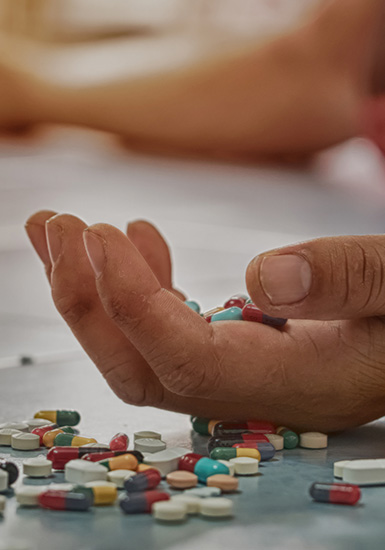Substance Abuse and Suboxone Treatment
Substance use disorder (SUD) is complex a condition in which there is uncontrolled use of a substance despite harmful consequence. People with SUD have an intense focus on using a certain substance(s) such as alcohol, tobacco, or illicit drugs, to the point where the person’s ability to function in day to day life becomes impaired. People keep using the substance even when they know it is causing or will cause problems. The most severe SUDs are sometimes called addictions.
Quality Therapies
Personal Meetings
According to the National Institute on Drug Abuse, people begin taking drugs for a variety of reasons, including:
- to feel good — feeling of pleasure, “high” or “intoxication”
- to feel better — relieve stress, forget problems, or feel numb
- to do better — improve performance or thinking
- curiosity and peer pressure or experimenting
Symptoms of substance use disorder are grouped into four categories:
- Impaired control: a craving or strong urge to use the substance; desire or failed attempts to cut down or control substance use
- Social problems: substance use causes failure to complete major tasks at work, school or home; social, work or leisure activities are given up or cut back because of substance use
- Risky use: substance is used in risky settings; continued use despite known problems
- Drug effects: tolerance (need for larger amounts to get the same effect); withdrawal symptoms (different for each substance)
Many people experience substance use disorder along with another psychiatric disorder. Oftentimes another psychiatric disorder precedes substance use disorder, or the use of a substance may trigger or worsen another psychiatric disorder.
Appropriately dosed Suboxone is superior to placebo in diminishing illicit opiate use and treatment retention.
Strick reminder from Brain Health USA to seek a doctor’s advice in addition to using this app and before making any medical decisions.
Resources:
- College of Psychiatric and Neurologic Pharmacists. (2021, January). Buprenorphine/Naloxone (Suboxone).
- U.S. Food & Drug Administration. (2018). FDA approves first generic versions of Suboxone sublingual film, which may increase access to treatment for opioid dependence.
- Velander, J. R. (2018). Suboxone: Rationale, Science, Misconceptions. The Ochsner journal, 18(1), 23–29.
- National Institute on Drug Abuse. (2018, June). Naloxone DrugFacts.
- Suboxone. (2022). Highlights of Prescribing Information.
- Center for Substance Abuse Treatment. (2015). Detoxification and Substance Abuse Treatment. Treatment Improvement Protocol (TIP) Series, No. 45. HHS Publication No. (SMA) 15-4131. Rockville, MD: Substance Abuse and Mental Health Services Administration.
- United States Drug Enforcement Administration. (2019, December). Buprenorphine.
- United States Drug Enforcement Administration. (n.d.). Drug Scheduling.
- Substance Abuse and Mental Health Services Administration. (2021, May 14). Buprenorphine.
- World Health Organization. (2009). Clinical Guidelines for Withdrawal Management and Treatment of Drug Dependence in Closed Settings. 4, Withdrawal Management. Geneva: World Health Organization.
